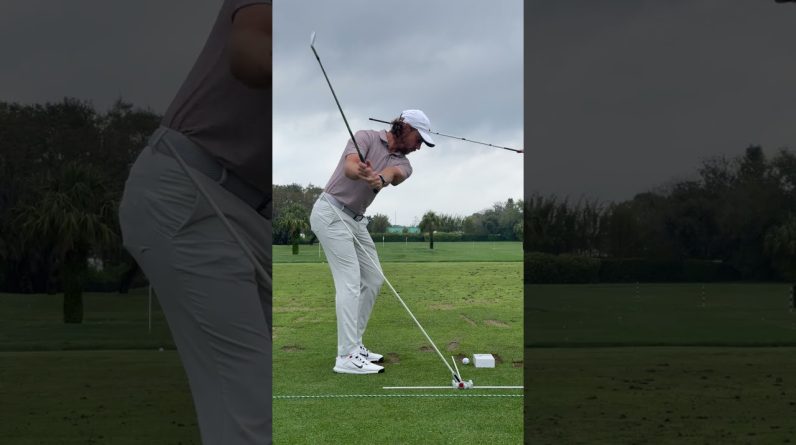Tiger Woods Details His Iron Swing
Tiger Woods, one of golf’s all-time legends, has long been admired for his impeccable iron play. Understanding Tiger Woods’ iron swing offers valuable insights into how precision, power, and consistency combine to create one of the best swings in golf history. This article takes a deep dive into the key elements of Tiger Woods’ iron swing, breaking down the mechanics, benefits, and practical techniques that all golfers can implement to improve their own iron play.
Key Elements of Tiger woods’ Iron Swing
Tiger Woods’ iron swing is revered due to it’s fluidity, control, and repeatable power.Here’s an overview of the fundamental components:
- Setup and Alignment: Tiger emphasizes a balanced stance with feet shoulder-width apart and precise alignment towards the target. His posture is athletic yet relaxed, allowing fluid movement.
- Grip: He uses a strong but comfortable grip to maintain control and leverage throughout the swing.
- Backswing: Tiger’s backswing on irons is compact and controlled, maintaining a wide arc and stable wrist hinge for maximum coil and stored energy.
- Downswing Sequence: Initiated by the hips and core, tiger’s downswing maintains lag and delivers the clubhead on the correct plane, maximizing ball-striking consistency.
- Impact Position: Tiger’s impact is characterized by a forward shaft lean, compressing the ball effectively for crisp contact.
- Follow Through: A full, balanced finish completes the swing, emphasizing rythm and fluidity.
Technical Breakdown of Woods’ Iron Swing
To better understand Tiger’s iron technique,review this breakdown focusing on biomechanics and swing mechanics:
| Swing Phase | Tiger’s Technique | key Benefit |
|---|---|---|
| Setup | Balanced stance,slight knee flex,aligned hips and shoulders | Promotes stability and directional accuracy |
| Backswing | Wide arc,flat left wrist,full shoulder turn | Generates power and saves consistency |
| Downswing | Hip rotation leads,maintaining lag angle | Improves ball striking and distance control |
| Impact | Forward shaft lean,hands ahead of ball | Maximizes compression and accuracy |
| Follow Through | Balanced finish,high and full swing extension | Promotes rhythm and injury prevention |
The Benefits of Mastering tiger Woods’ Iron Swing
Adapting key principles from Tiger Woods’ iron swing offers several advantages for golfers of all skill levels:
- Consistency: Achieving a repeatable swing reduces mishits and improves shot reliability.
- Increased Distance: Efficient energy transfer yields longer iron shots without sacrificing control.
- Accuracy: Proper alignment and swing path minimizes slices and hooks.
- Adaptability: Tiger’s swing mechanics can be tailored for different irons and shot shapes.
- Confidence: Understanding your swing fosters better decision-making on the course.
Practical Tips to Incorporate Tiger Woods’ Iron Swing Mechanics
Implement these hands-on tips inspired by Tiger Woods’ technique to refine your iron play:
- Start with Alignment: Use alignment sticks or clubs on the ground to ensure feet, hips, and shoulders point directly at your target line.
- Focus on Wrist Position: Practice keeping your left wrist flat during the backswing for improved clubface control.
- work on Hip Rotation: Incorporate drills that initiate the downswing from your lower body rather than your arms.
- Control Shaft Lean: Experiment with forward shaft lean at impact to improve ball compression and trajectory control.
- Practice Smooth Follow-Throughs: Complete your swing fully with balance to build rhythm and prevent injuries.
Drills to Practice Tiger Woods’ Iron Swing
- Pause at the Top Drill: Pause momentarily at the top of your backswing to check wrist position and shoulder turn.
- Step Through Drill: Take a short step forward during your follow-through to promote weight shift and balance.
- Lag Drill: Use a towel under your right arm on the downswing to encourage maintaining lag angle.
Firsthand Experience: How Golfers Benefit from Tiger’s Iron Swing
Many avid golfers and instructors have noticed dramatic improvements by adopting Tiger Woods’ iron fundamentals:
“After incorporating Tiger’s emphasis on hip-led downswing and forward shaft lean, my iron shots gained remarkable consistency and distance. The swing felt natural and repeatable.” – Chris L., amateur golfer
“Teaching Tiger’s swing sequence to students helps them grasp how power and control balance perfectly. It’s a great template for every golfer.” – Amanda K., golf coach
Common Misconceptions About Tiger Woods’ Iron Swing
Despite its effectiveness, some golfers misunderstand Tiger’s technique. Here are a few clarifications:
- Misconception #1: Tiger’s swing is overly athletic and unattainable.
Reality: Despite his athleticism, the fundamentals are simple and adaptable for recreational players. - Misconception #2: The swing relies solely on arm strength.
Reality: The power comes primarily from coordinated hip and torso rotation. - Misconception #3: Tiger’s irons swing is identical nonetheless of club.
Reality: He subtly adjusts length, tempo, and wrist position for different irons and shot types.
Summary of Tiger Woods’ Iron Swing key Focus Areas
| Focus Area | Tiger’s Approach | Your Takeaway |
|---|---|---|
| Stance & Setup | Balanced, athletic posture | Ensure balance for repeatability |
| Backswing | Wide arc with flat left wrist | Maximize energy storage |
| Downswing | Hips initiate, maintain lag | Focus on hip lead |
| Impact | Forward shaft lean | Compress the ball properly |
| Follow Through | Balanced, full and fluid | Develop rhythm and avoid injury |







